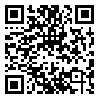1. Jafari N, Roshani T, Shahbazi G. The effectiveness of cognitive-behavioral play therapy on reducing handwriting and math problems in students with special learning disabilities. Research in School and Virtual Learning. 2022;9(3):93–100. [Persian] [
Article]
2. Movahedi Y, Majedi H. The effect of computer games on the pattern of brain waves in people with learning disabilities. Journal of Learning Disabilities. 2021;10(4):160–6. [Persian] [
Article]
3. Drewes AA. Blending play therapy with cognitive behavioral therapy: evidence-based and other effective treatments and techniques. John Wiley & Sons; 2009.
4. Torrents C, Ensenyat A, Ric A, Mateu M, Hristovski R. Free play with certain equipment constrains the emergence of exploratory behavior and physical activity in preschoolers. Nonlinear Dynamics Psychol Life Sci. 2018;22(4):509–33.
5. Maxwell LE, Mitchell MR, Evans GW. Effects of play equipment and loose parts on preschool children's outdoor play behavior: an observational study and design intervention. Child Youth Environ. 2008;18(2):36–63.
6. Cantin N, Ryan J, Polatajko HJ. Impact of task difficulty and motor ability on visual-motor task performance of children with and without developmental coordination disorder. Hum Mov Sci. 2014;34:217–32. [
DOI]
7. Parush S, Lifshitz N, Yochman A, Weintraub N. Relationships between handwriting components and underlying perceptual-motor functions among students during copying and dictation tasks. OTJR: Occupational Therapy Journal of Research. 2010;30(1):39–48. [
DOI]
8. Farahbod M, Minaei A. Adaption and standardization of the Test of Visual-Motor Skills Revised. Archives of Rehabilitation. 2004;5(1&2):39–48. [Persian] [
Article]
9. Beery KE. Developmental test of visual-motor integration: administration, scoring and teaching manual. Modern Curriculum Press; 1989.
10. Poon KW, Li-Tsang CWP, Weiss TPL, Rosenblum S. The effect of a computerized visual perception and visual-motor integration training program on improving Chinese handwriting of children with handwriting difficulties. Res Dev Disabil. 2010;31(6):1552–60. [
DOI]
11. Gaitán A, Garolera M, Cerulla N, Chico G, Rodriguez-Querol M, Canela-Soler J. Efficacy of an adjunctive computer-based cognitive training program in amnestic mild cognitive impairment and Alzheimer's disease: a single-blind, randomized clinical trial. Int J Geriatr Psychiatry. 2013;28(1):91-9. [
DOI]
12. Thorell LB, Lindqvist S, Bergman Nutley S, Bohlin G, Klingberg T. Training and transfer effects of executive functions in preschool children. Dev Sci. 2009;12(1):106–13. [
DOI]
13. Roach L, Keats M. Skill-based and planned active play versus free-play effects on fundamental movement skills in preschoolers. Percept Mot Skills. 2018;125(4):651–68. [
DOI]
14. Pate RR, Almeida MJ, McIver KL, Pfeiffer KA, Dowda M. Validation and calibration of an accelerometer in preschool children. Obesity (Silver Spring). 2006;14(11):2000–6. [
DOI]
15. Ghaffari M, Narimani M, Abedi S, Rahimi B. The effectiveness of rhythmic kinesthetic games on spatial perception, working memory, and cognitive failures of students with learning disabilities. Journal of Learning Disabilities. 2022;11(4):78– 90. [Persian] [
Article]
16. Willcutt EG, Boada R, Riddle MW, Chhabildas N, DeFries JC, Pennington BF. Colorado Learning Difficulties Questionnaire: validation of a parent-report screening measure. Psychol Assess. 2011;23(3):778–91. [
DOI]
17. Hajloo N, Rezaie Sharif A. Psychometric properties of Colorado Learning Difficulties Questionnaire (CLDQ). Journal of Learning Disabilities. 2012;1(1):24–43. [Persian] [
Article]
18. Fallahchai R. Barrasi ekhtelal haye narasa khani va narasa nevisi danesh amoozan doreye ebtedaei [The survey dyslexia and dysgraphia in elementary students] [Thesis for MSc]. [Tehran, Iran]: School of Psychology, Tarbiat Modares University; 1995. [Persian]
19. Seydanlo T, Bagherpour M. The influence of the use of music on improving reading and writing performance of students with learning disabilities. Journal of Learning Disabilities. 2018;7(2):112–7. [Persian] [
Article]
20. Jafarnezhadgero A, Salem M, Valizadehorang A. Effect of motor games in accordance with montessori education theory on electrical activity of muscles in children with attention-deficit/hyperactivity disorder. Iranian Journal of Rehabilitation Research in Nursing. 2021;7(3):41–51. [Persian] [
Article]
21. Rostamipour M, Zareian E, Aslankhani MA. The effect of exergaming interventions (Xbox Kinect) on gross motor skills of children with developmental motor delay: emphasis on modern training. Journal of Motor and Behavioral Sciences. 2019;2(1):75–84. [Persian] [
Article]
22. Mohamad Zadeh H, Safari H. Effect of visual training on motor function and vision search behaviors in dart throwing skills. Scientific Journal of Rehabilitation Medicine. [Persian] [
Article]
23. Bergen D. Foundations of play theory. In: The SAGE handbook of play and learning in early childhood. NewYork: SAGE Publications Ltd; 2014, pp. 9-21. [
DOI]
24. Abdi A, Karami M, Hatami J. The efficacy of improving visual memory through play therapy on reducing spilling errors in dysgraphia student. Journal of Research in Rehabilitation Sciences. [Persian] [
Article]
25. Chin ECH, Williams MW, Taylor JE, Harvey ST. The influence of negative affect on test anxiety and academic performance: an examination of the tripartite model of emotions. Learn Individ Differ. 2017;54:1–8. [
DOI]
26. Taghavi Jelodar M, Hami M. The effectiveness of the computer games on children's problem-solving ability. Journal of Instruction and Evaluation. 2018;11(42):55-70. [Persian] [
Article]
27. Baezzat F, Eizadifard R. Impact of self-regulation strategies on reduction of spelling errors in primary students with writing disorder. Journal of Exceptional Children. 2010;10(1):21-8. [
Article]

 ، کیوان ملانوروزی*2
، کیوان ملانوروزی*2 
 ، عبداله قاسمی2
، عبداله قاسمی2 
 ، علی کاشی3
، علی کاشی3 




